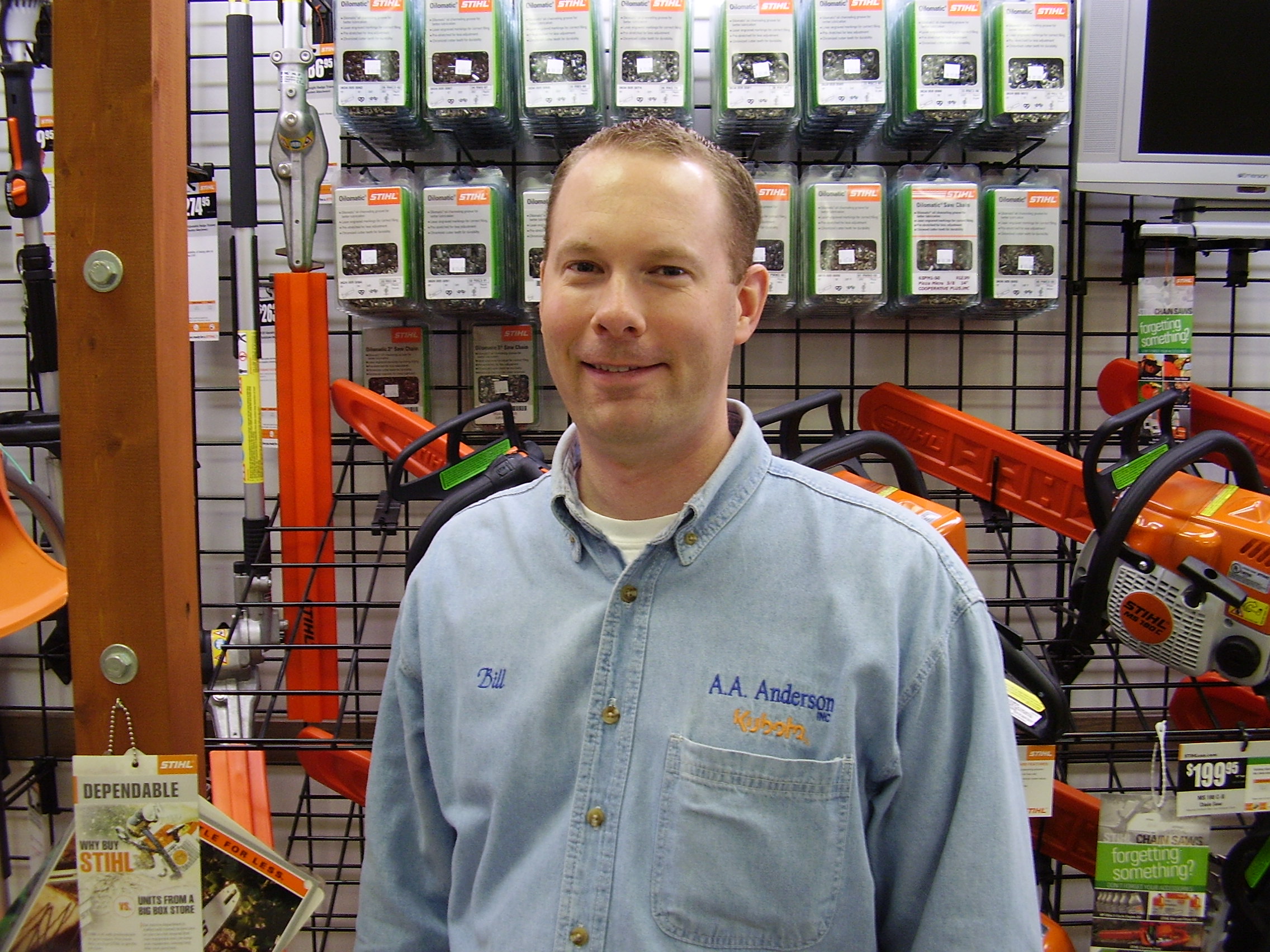A.A. Anderson, a third-generation Kubota dealership in Harvard, Ill., is celebrating its 75th year in business. Bill Anderson, grandson of founder Andy Anderson, now leads as dealership general manager.
"It's my job to make sure we move forward in a way that benefits our customers and employees in coming years," says Anderson.
Anderson's strategy for achieving both goals includes an emphasis on training. Ongoing training helps his dealership keep up with equipment changes for the multiple lines he carries, which include Bear Cat, Cub Cadet, Exmark and STIHL. Training also helps his sales team work with "Internet-savvy" rural lifestyle customers, who often have done research before entering the dealership.
"From time to time, a salesman can be caught off guard. That's part of the reason training is so important," Anderson says.
"Anybody who deals with customers knows they don't always have the right answer. Go in and find the answer, so you'll have confidence for the next time."

Bill Anderson is general manager of A.A. Anderson, a Kubota dealership in Harvard, IL.
He uses downtime in January and February to take advantage of on-site training schools and online training, such as the STIHL iCademy program. STIHL offers more than 50 online training modules and videos related to equipment and service as well as business management topics.
"Our sales, service, and parts staff are all involved with the training. Those folks all interact with our customers and they each have an opportunity to implement what they have learned through iCademy, whether it's helping a customer decide which chain saw they should purchase, what replacement chain is needed, or technical issues related to the service of their machine," he says.
Anderson says this program works particularly well because of support from his STIHL representative, who checks in to see how his dealership is using the training. Ultimately, it's up to him as the dealership owner, though, to make sure his team gets the training they need.
"I need to find time for them. They need to know it's OK to spend time sitting in front of a computer," he says.
Keep Your Team Sharp
Training expert Becky Pike Pluth says finding time for training saves time in the long run.
"It takes far more work to get someone up to speed," Pluth says. She's the chairman and chief training officer for the Bob Pike Group. The company has been offering train-the-trainer workshops and consulting services for more than 30 years.
The key is to offer the right kind of training. Often, that involves adding a participation component - ways employees can work together to discover the answers. This can be applied to training dealers develop or to adapting manufacturer-provided training.

Becky Pike Pluth is chairman chief training officer at the Bob Pike Group.
For instance, for manufacturer training, Pluth suggests that two employees work through online training together. Also, consider implementing five-minute training meetings each week. Encourage employees to share tips they've learned online or through on-site schools.
"These quick-hitting ideas or concepts can help sharpen the team in an ongoing basis. It keeps owners sharp, too, when they have to think about 'What's my five minutes for the week?' " Pluth says.
Follow up by having the team report back the next week. For instance, a salesperson could share how new product knowledge helped them deal with customer objections. She says practice and sometimes, failing and trying again, builds confidence.
"They may go out and fall flat on their face. Have them practice again in a safe place," she says.
Energize Training Methods
Dealers can use this seasonal downtime to give new energy to in-house training programs. One important first step: Lose the lecture-based approach.
"When people participate in learning, that's when retention goes up," Pluth says.
Here's one example. Instead of lecturing to a group on a topic, such as steps for closing a sale, Pluth suggests writing the steps on cards. Split the employees into teams and have them organize the steps together and present to the group.
"Now they're using their life experiences," she says.
For equipment or service training, consider using diagrams posted on the walls, and employees match parts, repair steps, etc.
"They will be excited about learning because they will get some of the answers right. And, they'll see where they have gaps in their knowledge," Pluth says.
Or, facilitate training meetings at which long-time employees share personal success stories. New-hires will learn what has worked at that particular location. And, by attending the training meetings, seasoned employees may learn ideas from newcomers.
The goal is to be open for interaction when and how it makes sense for the personality of your team and the dealership.
'Coach Kindly' to Encourage Training Success
A successful training program is measured by whether employees are learning and applying knowledge. You as the dealer/owner need to watch for issues that may be blocking that success - and then "coach kindly" to make changes, says Pluth.
For instance, if one employee is struggling, ask their opinion on the training and how they think they are doing. Share the score and why it needs to be improved. Then, talk about what the employee might do differently next time.
"Ask questions to help them do most of the talking. Be careful about your tone. Come at it from the point of concern," Pluth says.
If the training obstacles involve several employees, bring up the discussion before the group. Ask what they think works and what could be improved. Pluth says it may simply be about the idea of change.
"Change can create anxiety. Ask your employees, 'What can we do to help you through this?' " she says.
Train to Serve
It's that constant change that keeps Bill Anderson committed to training at his dealership.
"For years and years, a mower was a mover. We didn't have alternatives like propane and EFI is fairly new. These changes are coming on quickly and when a machine comes in we need to know what to do with it," he says.
It all ties back to serving the customer, Anderson says.
"It's basically about customer relationships, keeping them happy and coming back."





Post a comment
Report Abusive Comment